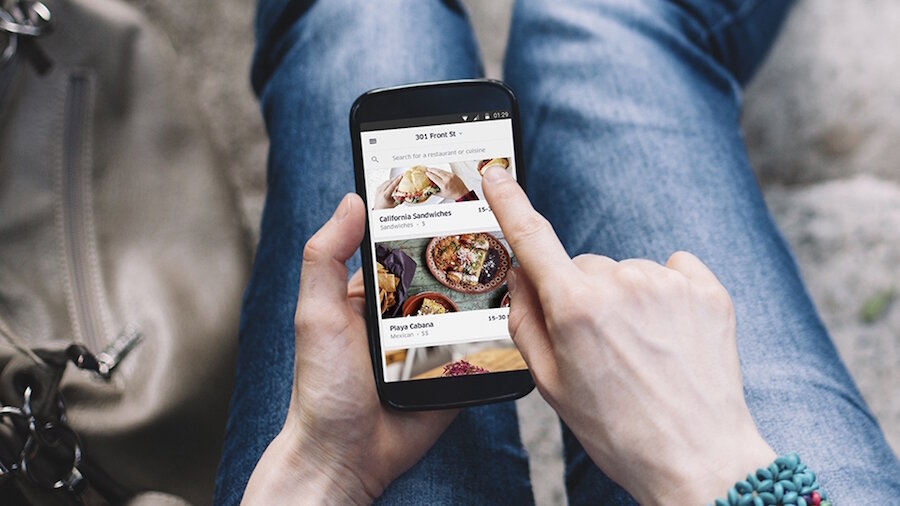How UberEats could be your next dinner date
Loading...
Uber is looking to bring breakfast, lunch, and dinner to paying customers.
On Tuesday, the company behind the widely popular ride-hailing app unveiled their savory innovation – a standalone app for ordering food. UberEats, available on Android and iOS, will expand the food delivery service the company already offers in select cities.
Uber started delivering food in 2014, and has been testing the standalone app in Toronto for months prior to the US launch. But the standalone model and access to full restaurant menus are new in the US market. As of Tuesday, the app and expanded service are available in Chicago, Houston, Los Angeles, San Francisco, and Toronto.
“In the same way Uber makes it easy to get from A to B, UberEats makes it easy to get food from the best restaurants in your city,” said Jason Droege, Head of UberEVERYTHING, in the press release.
The food delivery industry has the potential to be worth billions. Grocery delivery, in its infancy, was a $10.9 billion industry, The Christian Science Monitor reported in September 2015, and the market was expected to grow 9.6 percent through 2019.
With the UberEats app, Uber is positioning itself to disrupt that market by using its existing infrastructure and customer base – but there is no shortage of competition.
Rivals include smaller companies like FreshDirect, Instacart, and Peapod, as well as tech giants like Amazon and Google who have had started similar services for grocery deliveries.
How will Uber’s new app set itself apart?
UberEats focuses on delivering from restaurants and relying on existing customers. Payments occur in the same way as the main Uber app, with users entering in a credit card beforehand that is charged when an order is placed. The UberEats account is the same account used on the normal Uber app.
The app itself is intuitive and simple – users open the app, browse through the restaurants, then look through the menu, and finally place an order, taking note of the estimated delivery time. Most deliveries seemed to hover between 20-35 minutes, depending on how long it takes to make the food. Select meal items are still part of the UberEats Instant menu, which offers delivery in 10 minutes or less.
The biggest cost of the convenience? Warm food.
Fortune’s Adam Lashinsky noted the issue in his account of his first order with UberEATS:
More troubling is that my food wasn’t remotely warm by the time it arrived, though it tasted quite good anyway. My lesson learned: Go for something cold or only use this service for now if I’m near a microwave oven.
For a service that is streamlined to make paying simple, some have also voiced questions about the cost of the delivery.
As part of the early marketing, UberEats delivery will be free for customers for now, but will cost a flat delivery fee later. For restaurants, the cost will be higher.
Most delivery services charge a small percentage of each delivery order to the restaurant, but UberEats is rumored to be taking a new high. According to the New York Post, UberEats charges restaurants 30 percent of every order delivered. Competitor Grubhub charges 12 percent.
Whether restaurants will be willing to pay the large percentage in the long-term is unclear, but for now some are celebrating the increase in access to customers.
The service hopes to expand into Atlanta, Austin, Dallas, Melbourne, New York, Paris, Seattle, and Washington DC soon.








